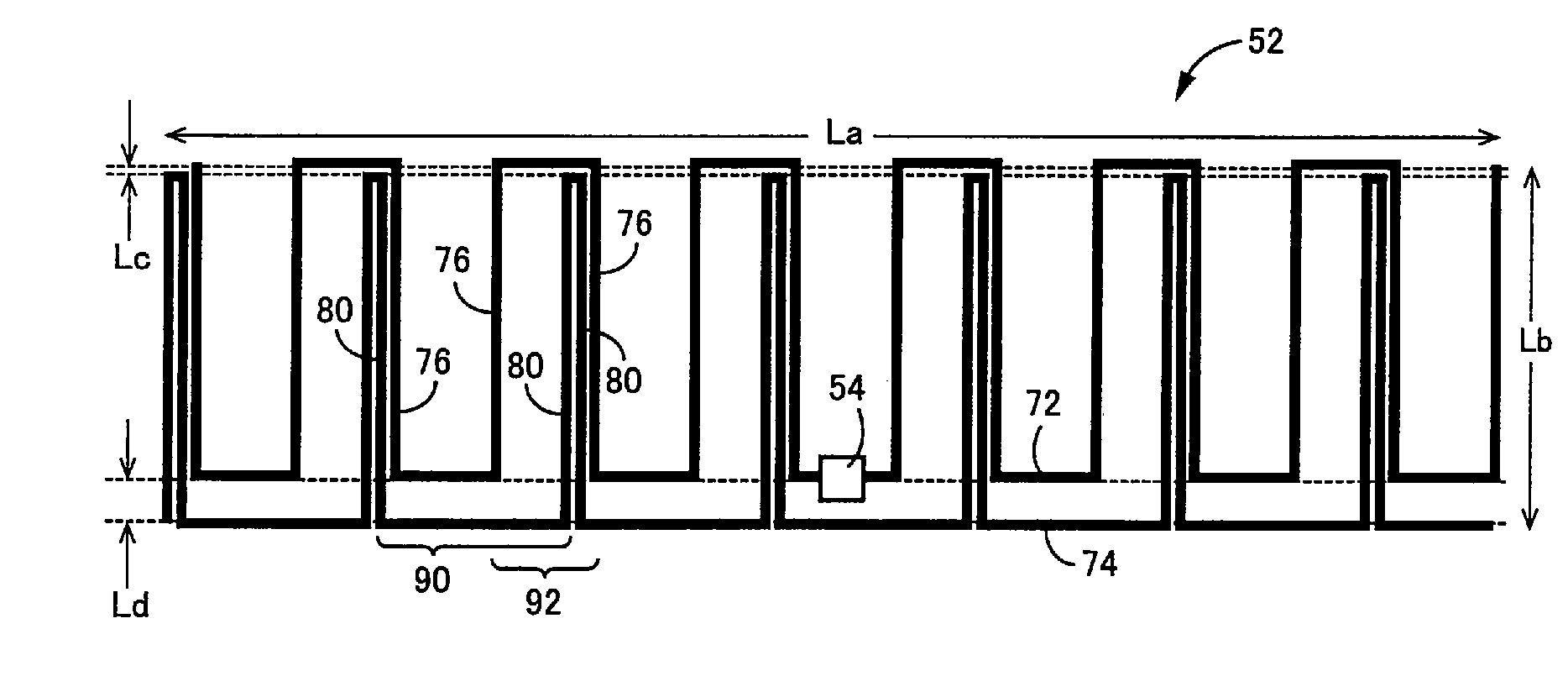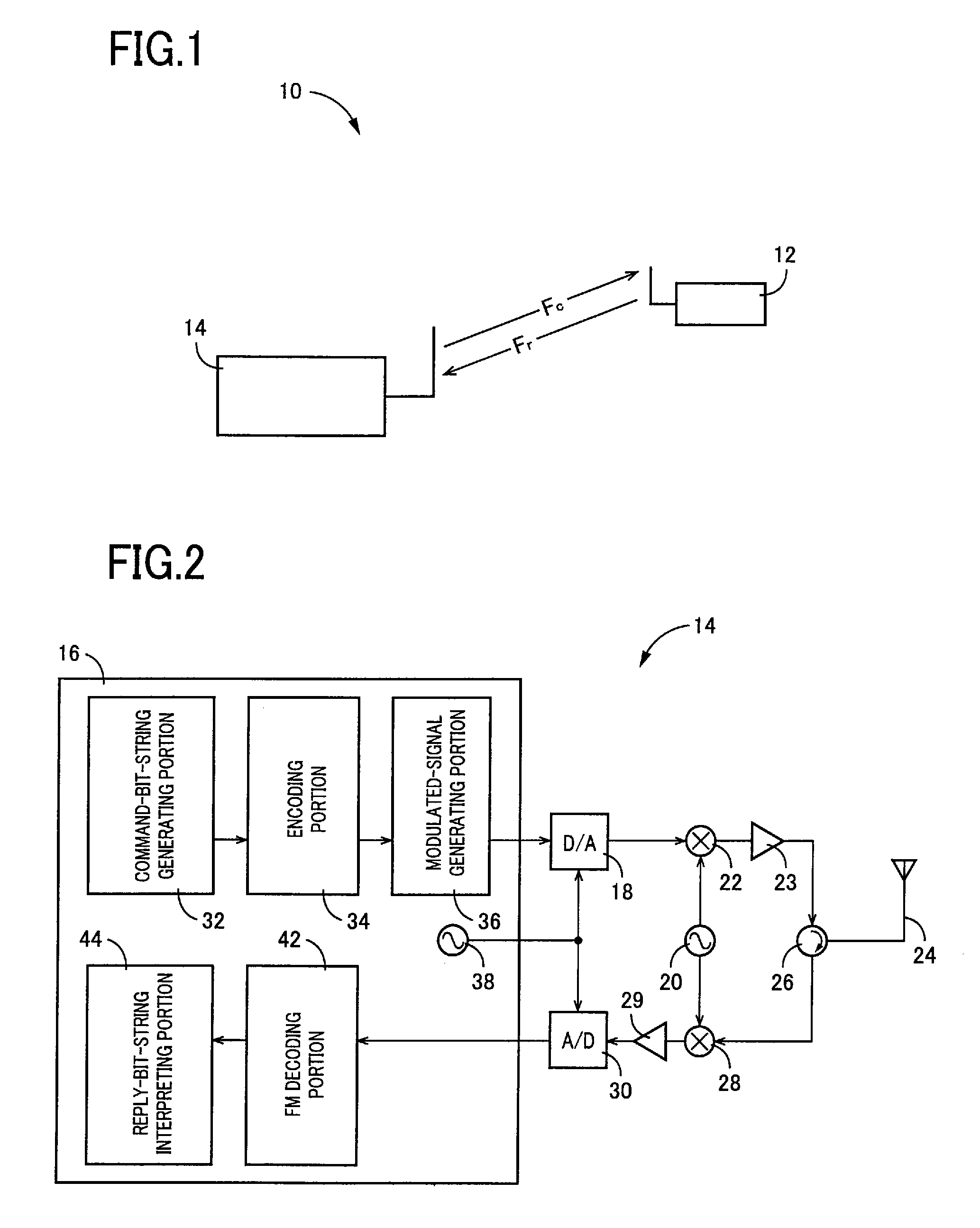Antenna, and radio-frequency identification tag
a radio-frequency identification and antenna technology, applied in the direction of antennas, antenna details, electrically short antennas, etc., can solve the problems of reducing the size of the radio-frequency identification tag, increasing the degree, and the risk of deterioration of the antenna characteristics such as its sensitivity value and communication distance, so as to achieve good impedance match, high communication sensitivity, and minimal deterioration of communication characteristics
- Summary
- Abstract
- Description
- Claims
- Application Information
AI Technical Summary
Benefits of technology
Problems solved by technology
Method used
Image
Examples
first embodiment
[0114]There will be described other embodiments of this invention. In the following embodiments, the same reference signs as used in the first embodiment will be used to identify the same elements, which will not be described redundantly.
second embodiment
[0115]Referring to the plan view of FIG. 25, there is shown an arrangement of an antenna 96 constructed according to this invention. Like the antenna 52 described above, this antenna 96 includes a driven meander line portion 98 and a parasitic meander line portion 100. The driven meander line portion 98 consists of the transverse conductive sections 76 and the longitudinal conductive sections 78 which are alternately connected to each other, so as to form a meandering or serpentine pattern, while the parasitic meander line portion 100 consists of the transverse conductive sections 80 and the longitudinal conductive sections 82, 84 which are alternately connected to each other so as to form a meandering or serpentine pattern. The driven and parasitic meander line portions 98, 100 are positioned relative to each other such that the adjacent two transverse conductive sections 80 of the parasitic meander line portion 100 which are spaced apart from each other by a comparatively small di...
third embodiment
[0118]Referring next to the plan view of FIG. 27, there is shown an arrangement of an antenna 104 constructed according to this invention. This antenna 104 includes a driven meander line portion 106 which is a line conductor formed in a meandering pattern, and a parasitic meander line portion 108 which is also a line conductor formed in a meandering pattern. Each of the driven and parasitic meander line portions 106, 108 consists of a plurality of transverse conductive sections 110, a plurality of long longitudinal conductive sections 112 and a plurality of short longitudinal conductive sections 114. The transverse conductive sections 110 and the longitudinal conductive sections 112, 114 are alternately connected to each other, so as to form a meandering or serpentine pattern. As shown in FIG. 27, the adjacent two transverse conductive sections 110 of the parasitic meander line portion 108 are interposed between the corresponding adjacent two transverse conductive sections 110 of th...
PUM
 Login to View More
Login to View More Abstract
Description
Claims
Application Information
 Login to View More
Login to View More - R&D
- Intellectual Property
- Life Sciences
- Materials
- Tech Scout
- Unparalleled Data Quality
- Higher Quality Content
- 60% Fewer Hallucinations
Browse by: Latest US Patents, China's latest patents, Technical Efficacy Thesaurus, Application Domain, Technology Topic, Popular Technical Reports.
© 2025 PatSnap. All rights reserved.Legal|Privacy policy|Modern Slavery Act Transparency Statement|Sitemap|About US| Contact US: help@patsnap.com



